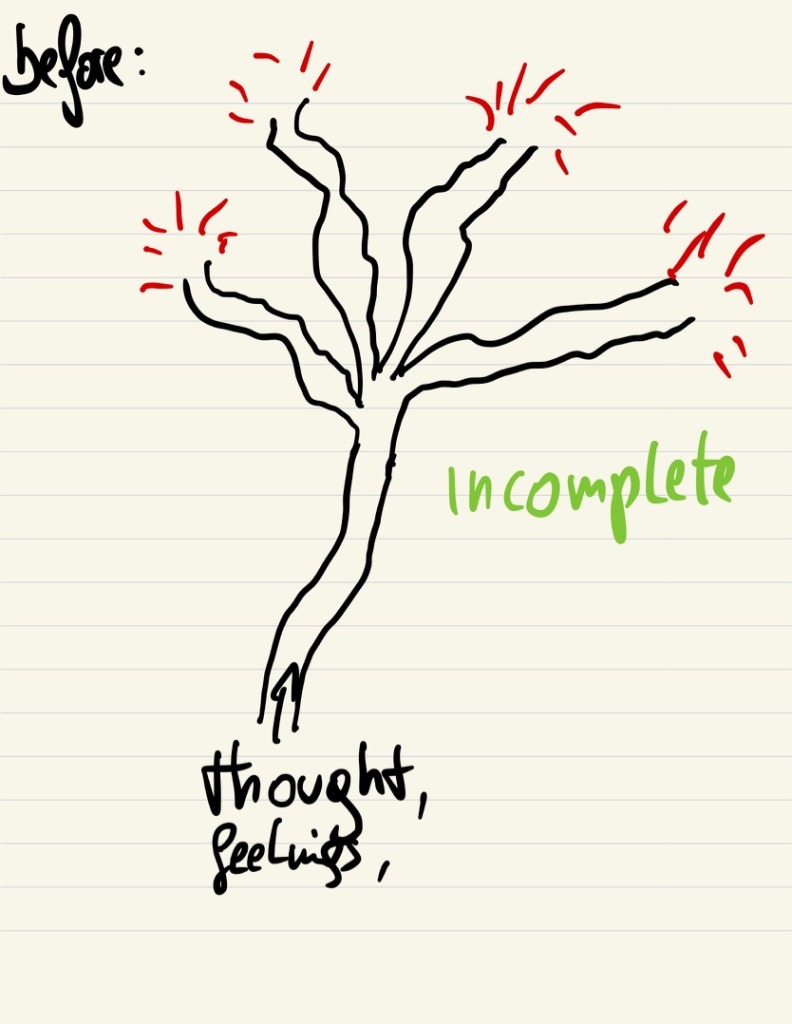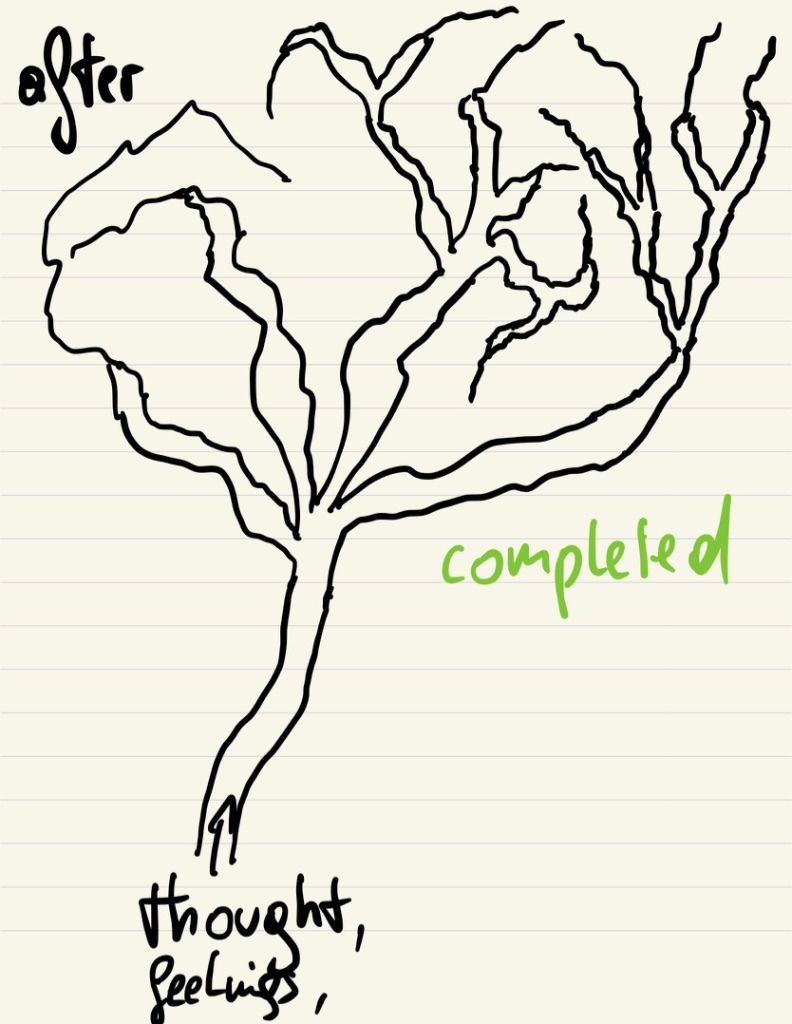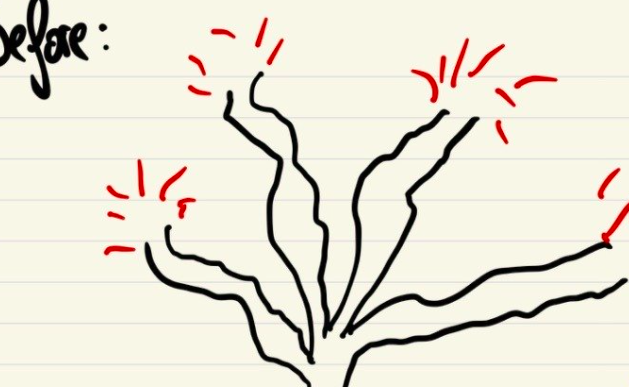I wonder if you’ve been there too and I imagine you have.
For as long as I could remember, my mind had frequently produced thoughts that I’d feel frustrated by.
I developed all kinds of strategies to help me cope with those:
>> Go for a walk
>> Exercise in the evenings to be so tired and pass out
>> Mindfulness and meditation (I spent a total of almost two years living in Buddhist monasteries to learn this!)
>> Ignore them
>> Think of other things
>> Breathing techniques to fall asleep faster
>> Reading before bed until I’m so tired I’d pass out
>> Journaling
I’m sure I’m forgetting some of the things I’ve tried, but this is it in a nutshell. All of these have been helpful to me in one way or another.
The big, underlying problem I discovered with all of them was that deep down, they were a strategy to make these thoughts go away only temporarily, no matter how effective the actual technique. And that made the technique useless after some time, because of all my underlying effort in resisting these thoughts—eventually, none of them stuck.
How I visualize what ruminating thoughts are
I visualize ruminating thoughts as incomplete, cutoff synaptic, or electrical wiring that is constantly firing. It’s firing and it’s firing, but it’s never connecting to anything.
So the energy just evaporates at the end of the synapse and then the next jolt of energy as thought fires through again—over and over and over. It never gets anywhere, but it’s exhausting and painful. I wonder if you’ve experienced that.

Now, this is just a visualization, but there’s some scientific evidence that supports that, particularly the idea of “biological completion.” It states that any movement that hasn’t been fully moved through from past experience, for example wanting to flee from danger, needs to be completed, even if the event already happened long ago and you survived it.
The energy of fleeing (running with our legs) otherwise gets stuck and leads to all kinds of health problems, including depression, mental problems, physical ailments, and illnesses.
The “aha” moment from dozens of coaching sessions
The last few months, through my coaching and observing clients even more deeply and what helps to break through their own patterns and feelings of stuckness, something unlocked for me too.
Sometimes they’d say, “Well, I also have these thoughts, it’s not something I really want to work on, but it’s just annoying.” It triggered me to pause and say, “Actually, how about we be with ‘those thoughts’ for a moment and just see where that takes us.”
In 100 percent of cases, these seemingly unimportant, ruminating thoughts, turned out to be very important and very meaningful—once they fully tuned in to them and found a way to actually listen to them. Eventually, they’d make for some of the most powerful sessions (in my opinion), and became a big turning point for my own ruminating thoughts.
The only thing that’s ever worked for me to be with ruminating thoughts
Despite learning so much in the monastery and the last few years through my therapy training about mindfulness and “being there” for life, what I realized was this: A part of me, throughout all my healing and self-improvement journey, wanted to fix myself. And that fixing myself mentality remained a never-ending quest because it continued to be a lack of acceptance of what is.
These words by Haemin Sunim, a Korean Zen monk struck a real chord around this:
“If I had to summarize the entirety
of most people’s
lives in a few words,
it would be
endless resistance to what is.
As we resist, we are in constant motion
trying to adjust,
and yet we still remain unhappy about what is.
If I had to summarize the entirety of an enlightened
person’s life in a few words,
it would be complete acceptance of what is.
As we accept what is, our minds are relaxed
and composed
while the world changes rapidly around us.” ~ Haenim Sunim, The Things You Can See Only When You Slow Down
What changed for me was this: I started to really listen to my ruminating thoughts. As if they were the most interesting story I’d ever heard in the world. Not as a gimmick, not as a trick, but with a genuine curiosity to get to know me better.
“What are those interesting, incomplete stories and thoughts that my mind wanted to think out?” Surprisingly, this didn’t turn into an endless endeavor. There was an end. They’d wind themselves, through peaks and valleys, bring about different emotions, go through different dialogues and stories with things I’d wished I’d said and then!
Surprisingly, they ended. The story and the narrative completed. And I would lie there in bed, completely at peace. Sometimes this would take no more than 5 or 10 minutes. And it’s as if my own brain had just told me a goodnight story.

Sometimes now, I have actually gone back to journaling or meditation, but with a completely different mindset. Almost as if doing so is akin to turning on the TV and listening and seeing the most fascinating story unfold, that is never an endless stream, even though it can appear that way when we first turn inward.
But the stories so far always ended. They didn’t need to be “quieted down” with another meditation trick. These thoughts just wanted one thing: to be listened to and heard and to have space to be fully “thought out” so to speak.
And so, my nighttimes have become in a much more peaceful and relaxed part of my life.
A caveat when getting started
Some people have told me that this doesn’t work for them, because the thoughts are so overwhelming and there are so many different streams and stories. And I understand that. I get that. Especially if someone hasn’t done any inner training, this can indeed be overwhelming.
In my own journey, I’ve done over four years of full-time inner exploration, thousands of hours of meditation, hundreds of therapy and coaching sessions, and many other well-being, healing, and self-improvement explorations on this path, I want to share that in full transparency, but I also don’t want to give that as an excuse to anyone not to try it. So it’s always a bit of a tricky thing for me to mention that.
In those cases, I’ve always recommended exploring this with another person who is skilled in those ways. (I think having that kind of support in your life is always a good idea!) And for the trickiest, incomplete stories and thoughts, I’m continuing to work with a coach and a therapist myself these days. It can be a coach, a therapist, a meditation teacher, what have you.
In part, these thoughts are incomplete because we don’t have the emotional and mental capacity and strength to complete them, and to go there, all the way to the potential pains, anger, hatred, sadness, and so forth.
Getting support when embarking on this has been the best decision in my life, it’s what I have done and still do professionally with hundreds of founders, CEOs, VCs, and other successful and powerful people who inspire me.
~
~ the above is adapted from the original at leowid.com.
~












Read 0 comments and reply